Do I Need to Flash Gapps Again
PLEASE Annotation: Flashing software similar Lineage Bone on a device is an "at your own take a chance" action. Even if you follow our guide to the letter, nosotros can't accept any responsibility if your device breaks. Our guide is meant for educational purposes, and we offer no guarantees of success.
One of the wonderful things nearly well-nigh Android devices is how many choices yous take for which version of the operating system to use. If you buy a smartphone with terrific hardware but the software doesn't meet your needs, yous can usually install something different (eat information technology, iOS!).
Depending on the device, at that place are potentially dozens of versions of Android yous tin install. Some are created and maintained by a squad of developers, while others have just a unmarried developer overseeing all aspects. All-time of all, they are all free.
See also: A wait at the major Android skins
The biggest and most popular custom Android experience is Lineage Bone. Formerly known as CyanogenMod (and later just Cyanogen), Lineage Os is a shut-to-stock version of Android with boosted features that make your device more than powerful and customizable.
1 of the best things most Lineage OS is that it lets you update many devices to the latest version of Android — fifty-fifty if stock updates for that device ended long agone. This breathes new life into otherwise-forgotten smartphones and tablets.
Installing a new operating system on your Android device might seem daunting, just if yous intermission it down into steps, information technology's fairly easy. There's also a wide margin for error so beginners don't need to worry about breaking their devices.
Here's how to do information technology!
First, a primer
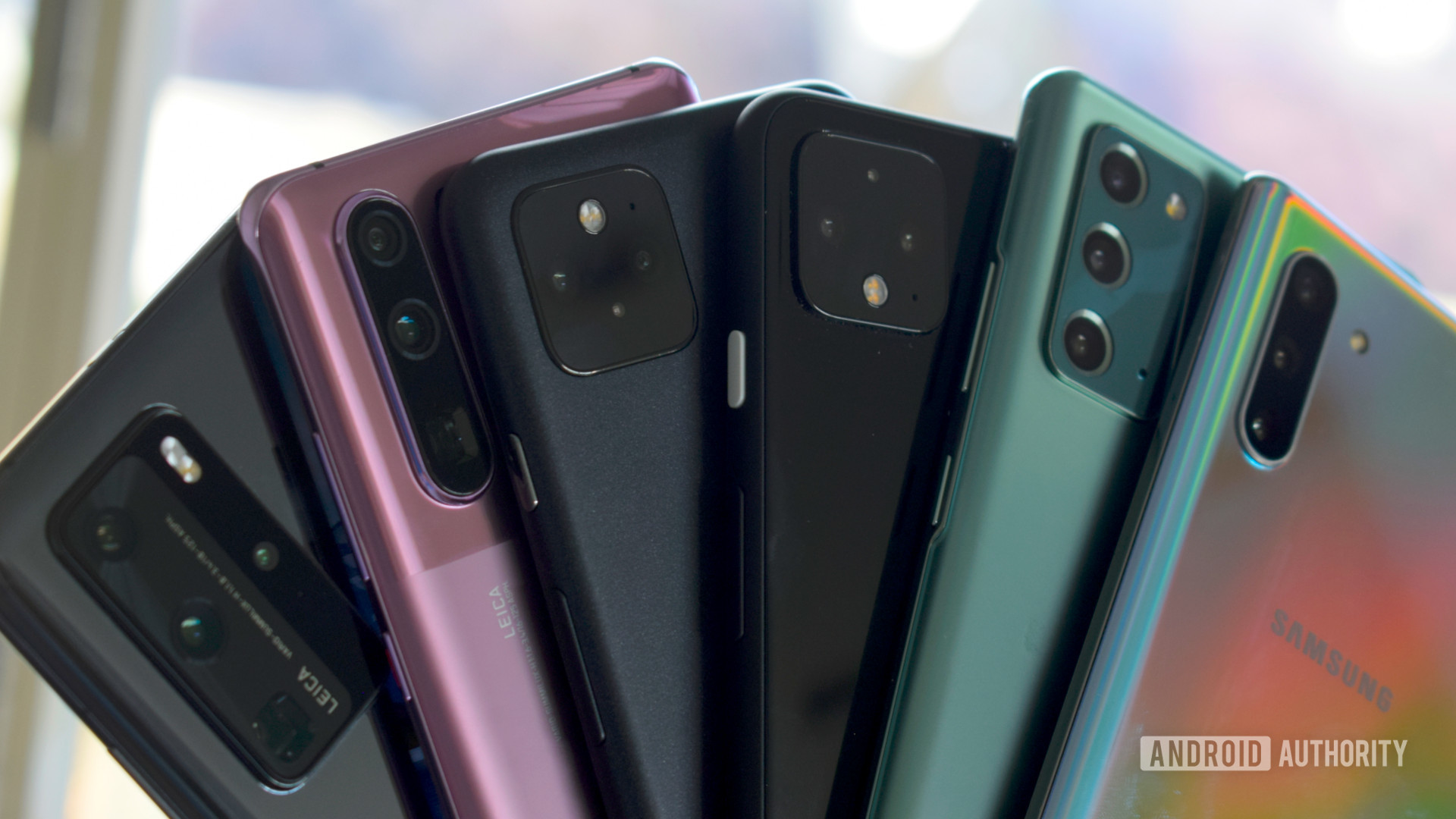
Robert Triggs / Android Authority
Earlier you become all crazy messing with the software of your device, you should know some basics. In that location are some terms and protocols that many sites and walkthroughs volition assume you already know, which could make things disruptive if you don't.
Here'south a quick glossary of terms for you to refer to afterward on if you're confused:
- ROM — Stands for "read-only retentiveness." This is where the core software of Android lives. Lineage OS will oft exist referred to equally a "custom ROM," every bit it is a customized version of pure Android.
- Flashing — When you overwrite one piece of software with another piece of software, that'south called "flashing." This guide you're reading goes over how to "flash" Lineage Os.
- Bootloader — When you ability on a device, the start thing that turns on is the bootloader, which is responsible for starting upwards other processes. Well-nigh Android devices come with locked bootloaders — i.e., you can't change what it does. Luckily, nigh bootloaders can be unlocked, which allows y'all to then flash new software.
- Recovery — Later on the bootloader loads, the recovery software organization will launch the operating system (Android). In almost all cases, to launch a custom ROM you will also need a custom recovery that differs from the 1 your device comes with.
- Wipe — Diverse parts of the flashing process volition upshot in a "wipe" — the erasure of data from your device. A total wipe would eliminate all operating system files from your device, causing your device to kick into the recovery and and so stop.
- Packages — Lineage Os, Google apps, custom recoveries, etc., will usually download to your device in a "parcel" of some kind, normally in ZIP format. In almost cases, you tin can just assume "packet" is equivalent to "ZIP file."
- ADB — Stands for "Android Debug Bridge." This is a tool that allows communication betwixt a personal computer and an Android smartphone. In most cases, you lot will need ADB on your computer to complete a flash.
- Fastboot — This diagnostic tool comes with most Android installs and allows you to flash a new ROM. Y'all unremarkably access fastboot through ADB. Some device manufacturers (including Samsung and a few others) utilize the term "Download manner" instead, only the functions are relatively the aforementioned.
- Brick — If something goes wrong with a wink, in rare cases information technology could cause your device to cease performance. If your phone doesn't even plough on, it's every bit useful as a brick, hence the proper name. Some people will say things like "soft brick" to clarify that the device is unusable just has the potential to exist stock-still. It is very difficult to brick a device, and usually but happens when people don't follow instructions carefully (hint hint).
Flashing Lineage OS: The Basics
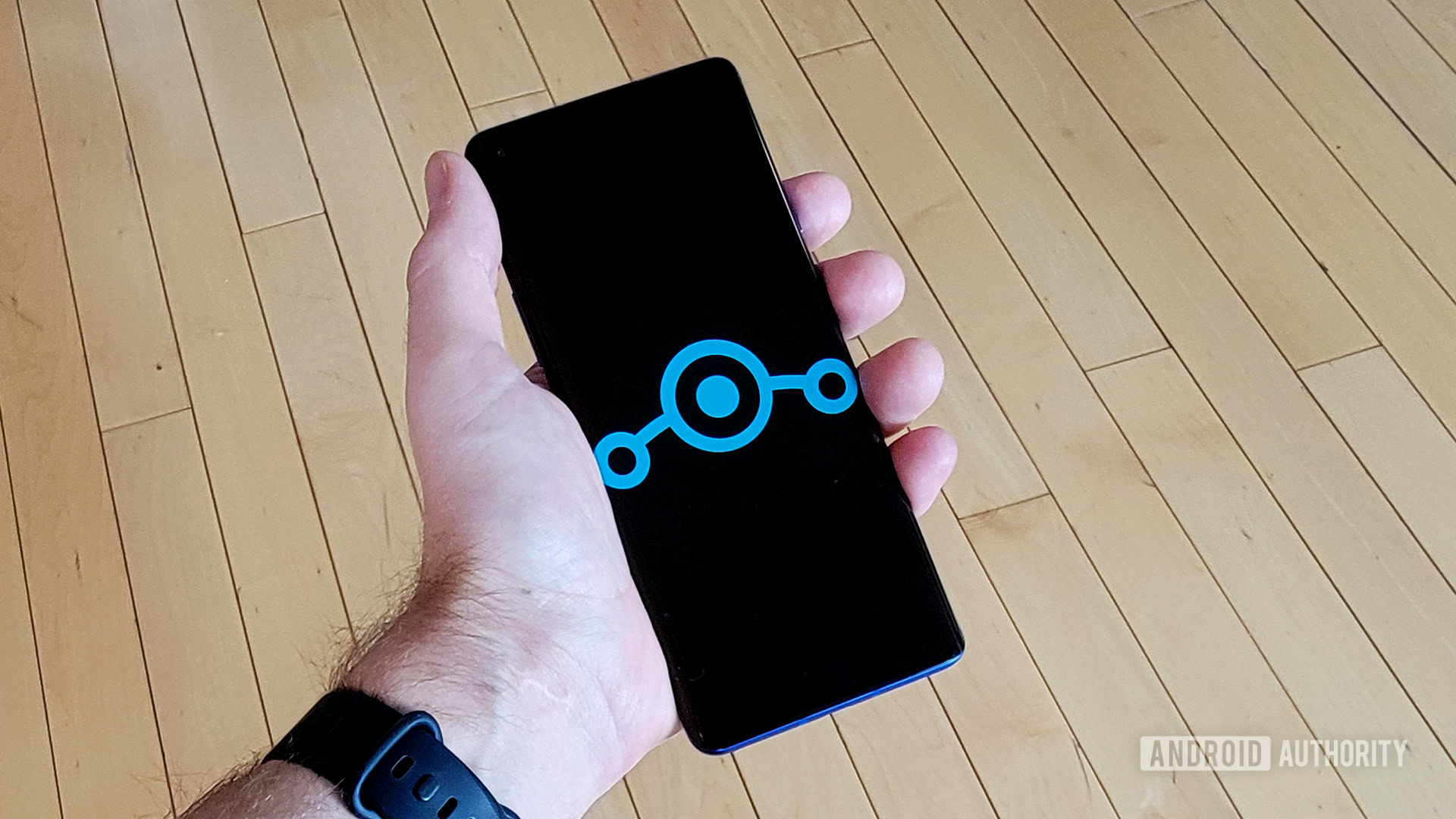
C. Scott Brown / Android Authority
When y'all wink Lineage OS (or whatsoever custom ROM), there are a set of steps you lot almost e'er must follow. How you complete those steps — and the tools needed to practise the task — differs from device to device. Just overall, the basic steps are the same.
Here'south what you lot'll demand to flash a ROM:
- Compatible Android smartphone or tablet
- USB cablevision for that device
- Laptop or desktop running Windows, macOS, or Linux
- An internet connection
- Time (this could take an hour or two, depending on how comfortable you are with the technologies involved)
Here are the steps one unremarkably performs to flash a ROM:
- Install necessary computer software (ADB, drivers, etc.)
- Download packages (ROM, recovery, apps, etc.)
- Backup and prepare device
- Unlock bootloader
- Wink custom recovery
- Flash custom ROM
- Install Google apps
- Reboot and personalize
Each step begets the next. Y'all install the calculator software first considering information technology accesses the device'due south bootloader. Then, yous unlock the bootloader because it accesses the recovery. You and then modify the recovery to a custom one because it flashes the ROM. You and then flash the ROM, and on and on. It'south a very linear process.
With that in mind, it is imperative you follow the 3rd footstep and brand a backup earlier performing any changes to your device. If something goes wrong subsequently you unlock the bootloader, there will exist no manner to go your phone back to the way it used to be. Instead, your phone will be gear up back to factory default similar it was when you lot first turned it on.
One other matter to keep in mind: unlocking the bootloader commonly voids your device's warranty. Devices will permanently record an unlocked bootloader and so fifty-fifty if you unlock information technology and then lock it again the company volition know. If something goes incorrect and you give it to the OEM, there's a good chance information technology will reject to assistance if it sees you unlocked the bootloader.
Step ane: Install the necessary software
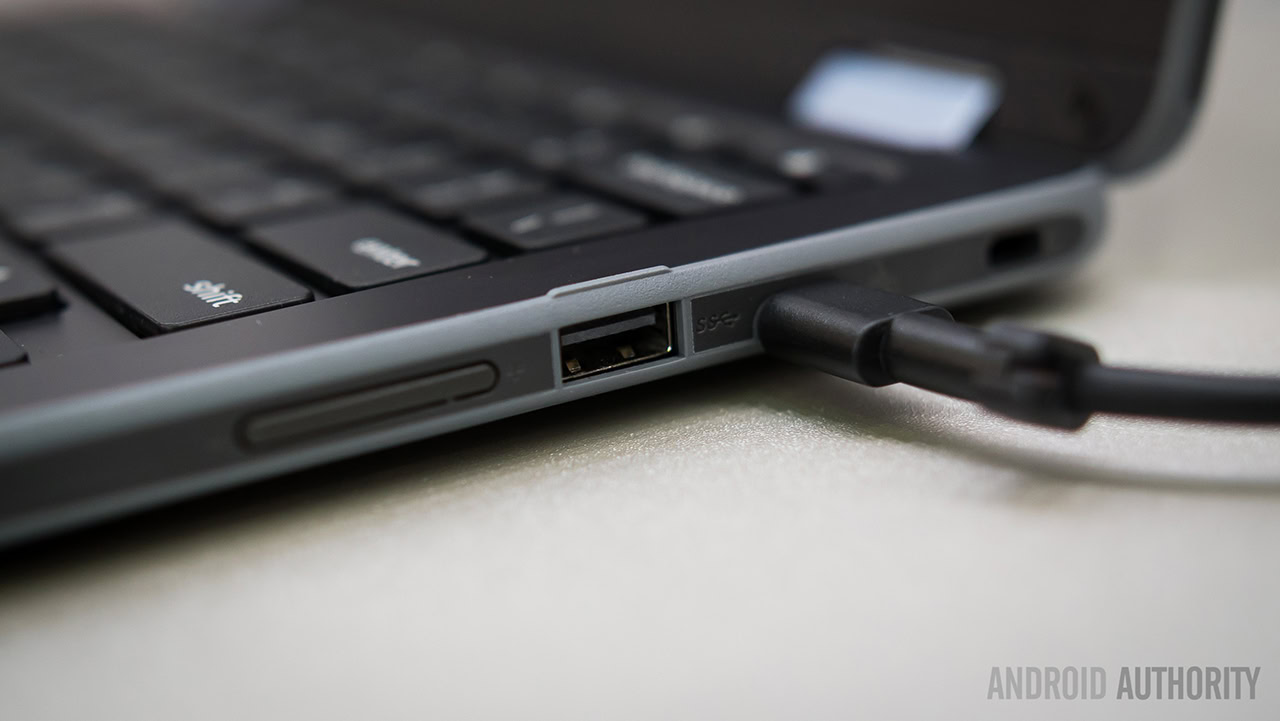
Some rare devices out in that location allow you to flash new ROMs without needing to hook upwardly to a calculator first. However, the vast majority of devices will require access to a PC running Windows, macOS, Linux, or even Chrome OS. This tin can be a 10-year-old laptop or high-functioning desktop — it doesn't take a lot of computational power to wink a ROM.
Usually, the software yous need is ADB. Google hosts and maintains ADB, so there are no concerns about viruses or malware when downloading and installing the programme.
Except in rare cases, you're going to need ADB on your estimator to practice this.
You tin visit this folio to follow explicit instructions on how to download and install ADB for your reckoner platform. It doesn't take long and the instructions are very straightforward.
In one case y'all've installed ADB, you'll access it through a command prompt on Windows or a terminal window on Linux and macOS. This might seem daunting, but don't worry: the commands are extremely simple and easy to only copy and paste.
Pro Tip: Eventually you'll hook your Android device to your reckoner to connect to ADB. When you practise this, make sure you are using the USB cable that came with the device. If you don't have access to that, use a high-quality, short-and-thick cablevision. Cheap cables you get for $1 each could cause problems with flashing, and then don't apply them.
Pace 2: Download packages
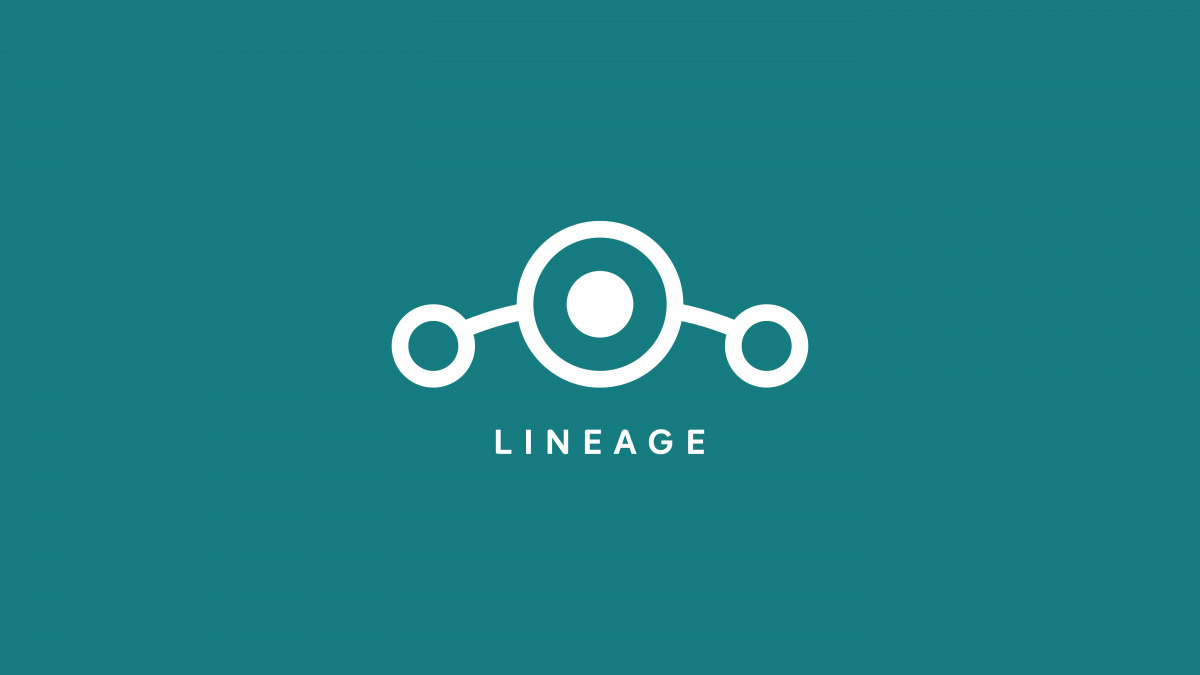
To get Lineage OS for your device, y'all'll need to get-go cheque to brand certain your device is compatible with the ROM. Become to the Lineage OS wiki on your computer and do a search for the device you'd like to wink.
Lineage Os supports the most popular devices from nearly all major manufacturers. Unless you have a very unpopular or low-priced upkeep device, chances are skilful you can install at least one version of Lineage OS.
One of the first steps is getting all your packages downloaded on your computer.
When y'all observe the device y'all want to flash, click on its photo. That volition take you lot to a folio filled with information on that particular device as it relates to Lineage Bone. On this folio, you'll observe a link to download packages.
When you get to the list of files associated with your device, you might wonder which one to download. Merely download whichever file has the most recent upload date nether the column labeled "File." You'll also want to download the file right next to it under the column "Recovery image." Remember, we're downloading these files on a calculator, not your telephone!
Got the files! At present what?
One time you have those ii files downloaded to your computer, you tin can get out the Lineage OS site. Withal, you don't just need the Lineage Os and recovery packages; you as well need the Google apps package.
Why do you need a Google apps package? The rules of open-source systems state that Lineage Os cannot come with Google apps pre-installed. Without Google apps, yous won't have admission to the Play Store to detect the apps you want. Furthermore, if you don't install these during the initial flashing process, yous volition non have any Google products on your device when yous boot. You can't install the apps later — you lot must install them during your original flash.
Required reading: Everything you lot need to know about Google Play Services
You tin can go the appropriate Google apps for your device here. Refer to the Lineage Bone installation guide for your particular device for help on choosing the Google apps package you need. For most devices, you'll cull the Arm64 packet for the most recent version of Android.
In one case you lot have those three packages downloaded (Lineage, recovery, Google apps), move the files into the same location as the ADB files you installed in the previous step. And so rename them to simpler things; for example, the recovery file name is very long and tricky (lineage-18.1-20220109-recovery-instantnoodlep.img, for example). Change it to just RECOVERY.img. This will make it easier to find the files afterwards and also save you some control line typing.
Rename each file you downloaded as such:
- lineage-20.x-xxxxxxxx-recovery-xxxx.img > RECOVERY.img
- lineage-xx.x-xxxxxxxx-nightly-xxxx-signed.zip > LINEAGE.zip
- MindTheGapps-xx.ten.x-xxxxx-xxxxxxxx_xxxxxx.naught > GAPPS.nix
Don't forget to move them to the ADB folder (for Windows, that's %USERPROFILE%\adb-fastboot\platform-tools). Once the files are all organized, you lot're ready for the adjacent step!
Pro Tip: Your device has a code proper noun that Lineage Os volition use to identify it. The code name is shown on the Lineage OS compatible devices list — use this to search for compatible packages, that fashion you lot know y'all're e'er downloading the right one!
Step 3: Backup and prepare device
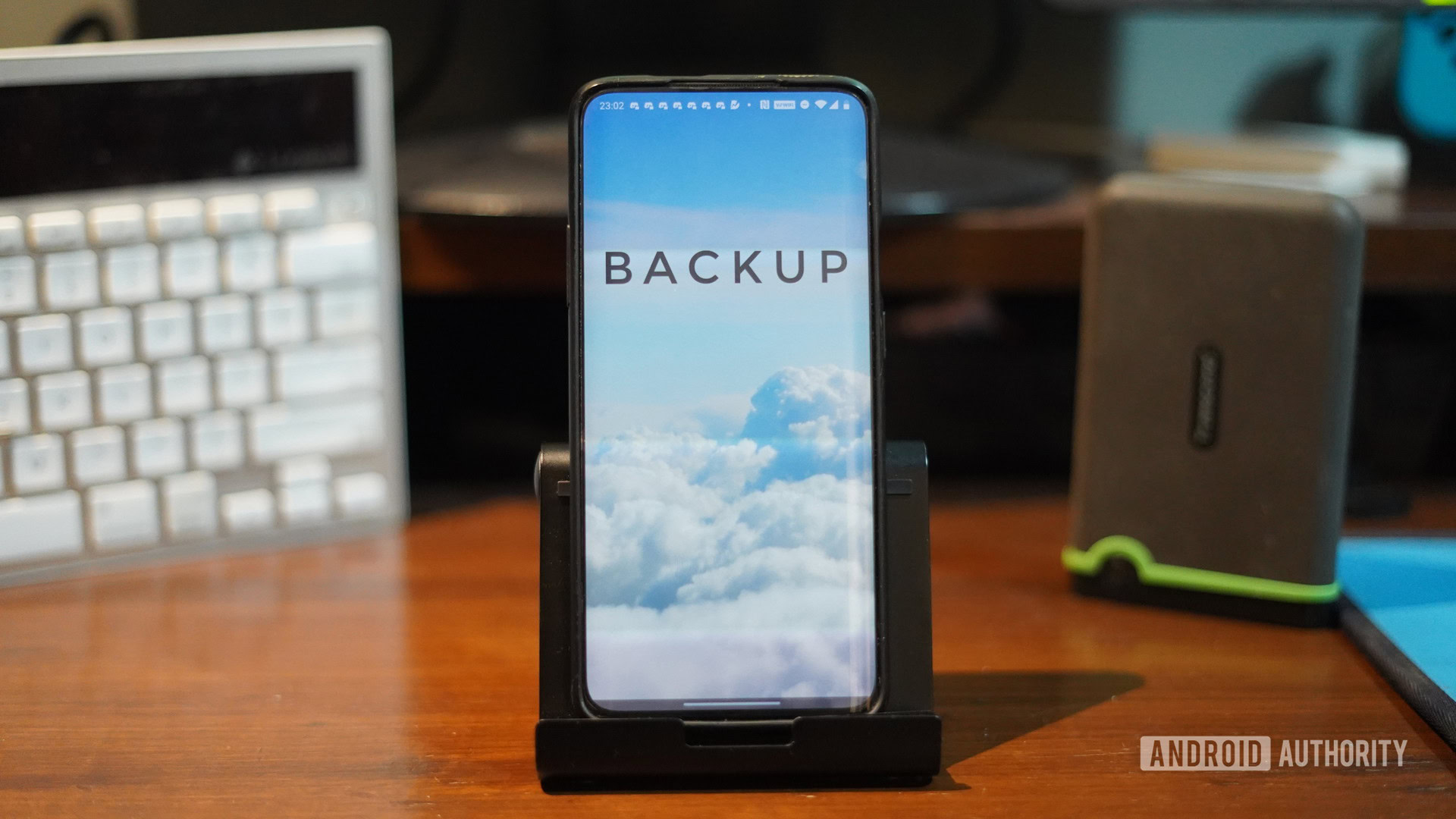
At that place are many dissimilar ways to backup your device. At that place are gratis and paid apps on the Google Play Store, also as free and paid software for personal computers.
There'due south no one correct way to fill-in your device. Figure out whichever method works best for y'all and make the backup.
Afterward you've backed everything up, you need to exercise 2 things on your device before you move on to the adjacent stride: enable USB debugging and OEM unlocking. These are ii toggles in your device's settings panel, hidden in a department called "Developer Options."
Don't skip this step: fill-in everything showtime!
Do a Google search for "access Android developer options [your device proper noun here]" to discover instructions on how to access these 2 toggles (it unremarkably involves borer a agglomeration of times on your Android build number in Settings). Once you accept access to developer options, toggle on both USB debugging and OEM unlock. If OEM unlock isn't there, don't worry: just brand sure USB debugging is turned on.
Once yous've done all that, connect your device to your computer with a good USB cablevision. You might see a notification on your phone asking if you trust the computer. Confirm you trust the connectedness and exit out of settings. You might see drivers are installing on your computer, which is normal.
You're ready for the adjacent step!
Pro Tip: Do not skip anything in this step. This stuff is hither for a reason. It could accept you lot hours to reinstall all your apps, log in to all your accounts, move over all your photos, and all that. Yous besides don't want to risk losing whatsoever of import data. Be condom!
Step four: Unlock the bootloader
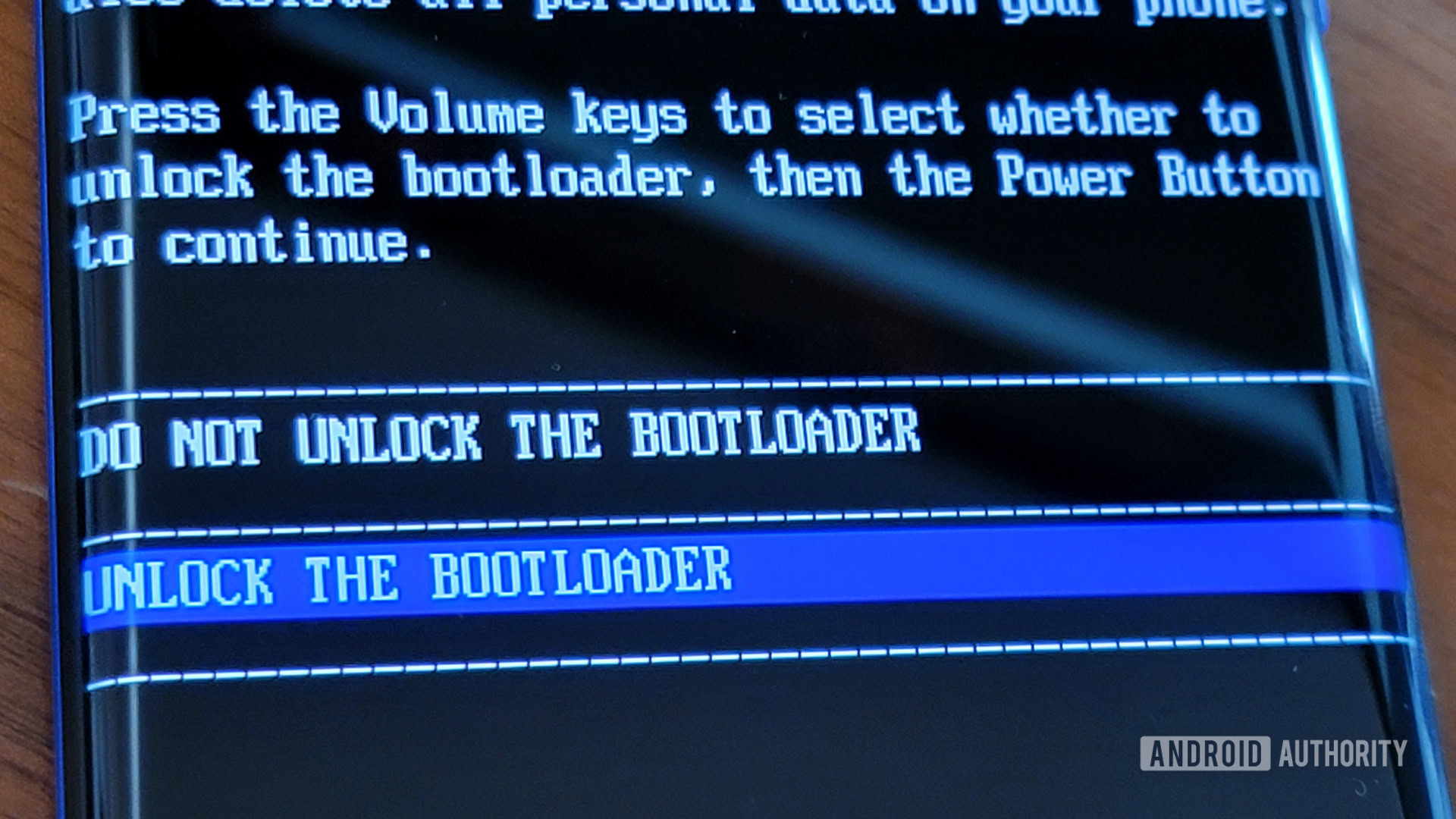
C. Scott Brownish / Android Authority
The steps for unlocking the bootloader of your device volition vary depending on the brand and model of your smartphone or tablet. Some OEMs make the process incredibly easy, while others purposely make information technology hard (or fifty-fifty incommunicable).
To make your life easier, caput over to XDA Developers and find the forum for your device. Skim through the threads and see if other users have successfully unlocked the bootloader. If everyone else seems to be having no trouble, you'll exist fine.
If you lot find other users are having problem with the bootloader, information technology could exist for a few reasons. Information technology might exist because the device is too new, so no i has figured out the process withal. It might also be that the bootloader is protected and difficult or incommunicable to unlock; Samsung is notorious for this.
Nuts for unlocking a bootloader
Once you are sure the bootloader is unlockable, head to the Lineage Bone installation guide for your particular device. There you'll notice step-past-step instructions on how to unlock your bootloader.
Remember: this will wipe your device's information.
In nearly cases, to unlock the bootloader y'all claw your device up to your computer using a USB cablevision and then run a few ADB and fastboot commands to unlock the smartphone or tablet:
- An ADB command to make sure your device is properly connected
- An ADB command to reboot the device into fastboot mode (see glossary above)
- A fastboot command to cheque that the device is in fastboot mode and properly connected
- A fastboot command to unlock the bootloader
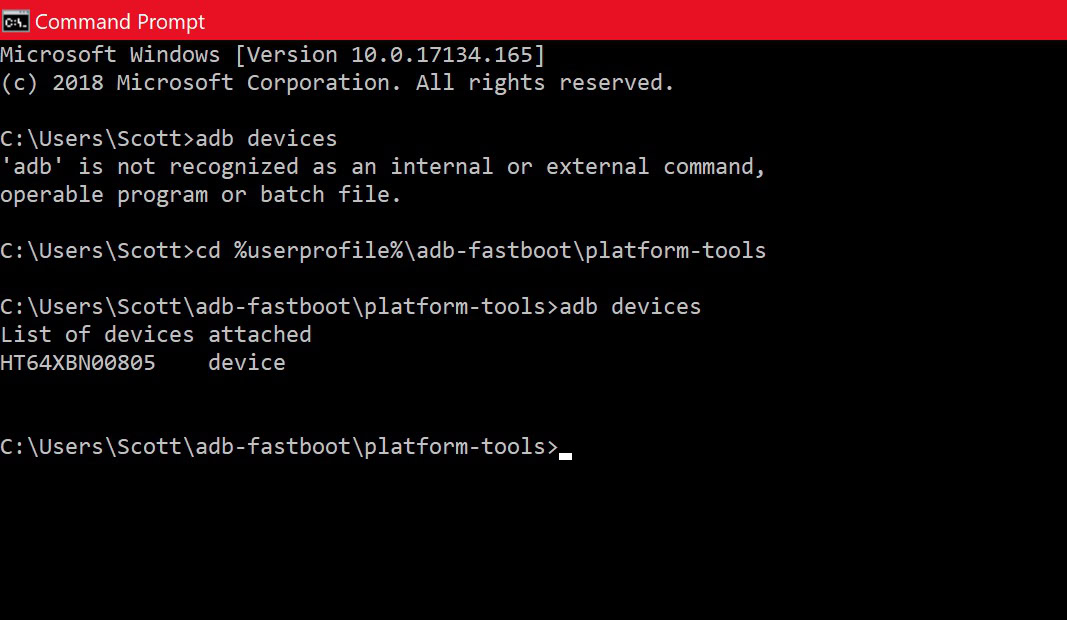
If you are on Windows, you might run into an fault when y'all try the steps listed on your device'southward bootloader folio. The problem might be that your command prompt is not in the right location. With the command prompt open, type the following command (come across higher up):
cd %userprofile%\adb-fastboot\platform-tools
The get-go thing to do afterwards hooking your device up to the computer is run an ADB command to ensure a proper connectedness (see higher up):
adb devices
If yous don't see whatever devices listed after running that command, check your Android device — it might accept this screen:
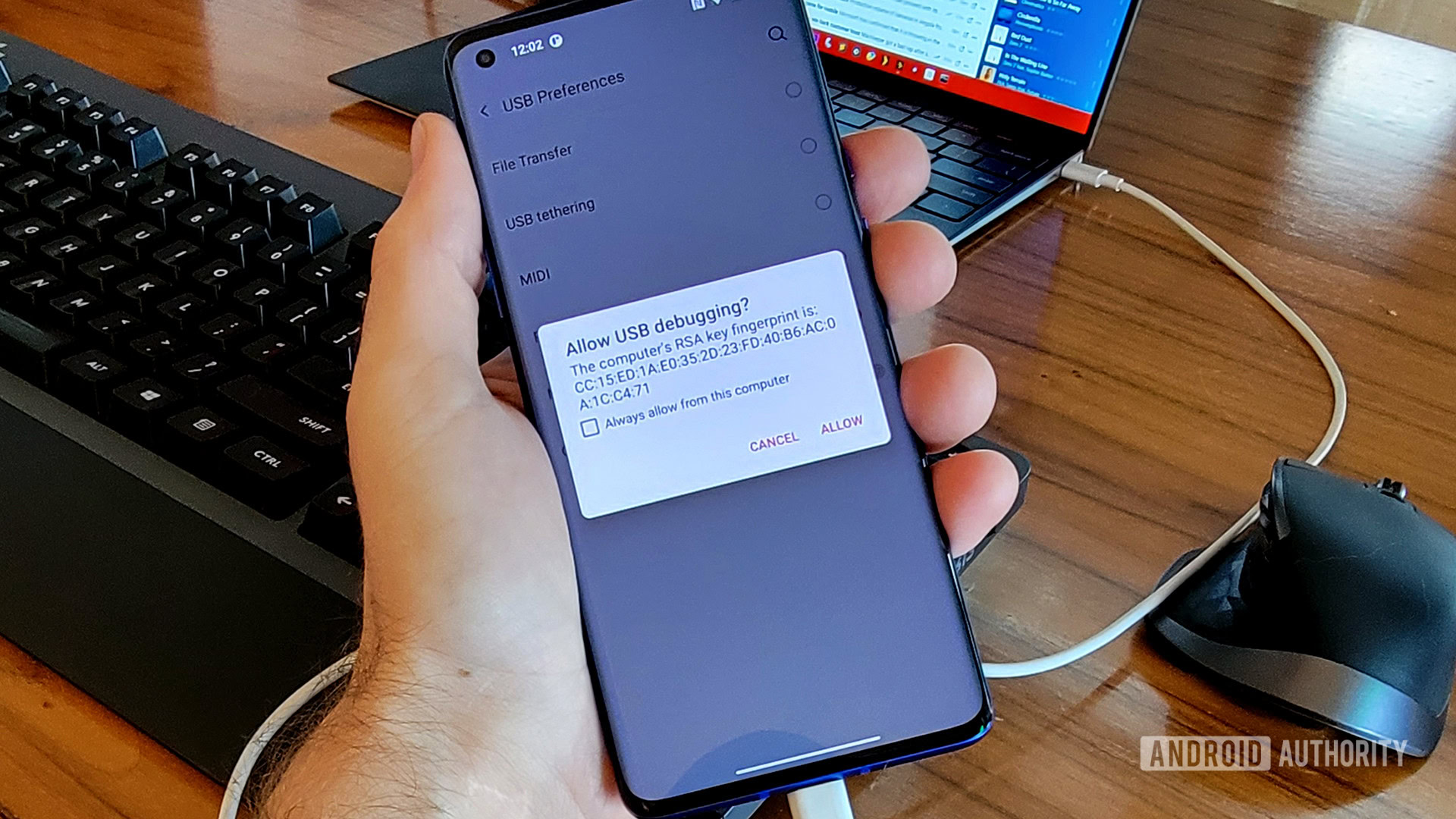
C. Scott Brown / Android Authority
Click the "Always allow" box and hitting "Allow." That should solve the problem, merely run the "adb devices" command once again just to be sure.
If after successfully connecting to ADB and rebooting into fastboot mode you face some bug, that likely means you need to update the drivers on your computer. Do a Google search for "[device proper noun hither] drivers" and download and install the latest version.
With all that done, you should be able to successfully unlock the bootloader. After your bootloader is unlocked, your device volition reboot and enter Android setup, just like later a factory reset. You're ready for the adjacent stride.
Pro Tip: YouTube is your friend! A quick YouTube search could net you lot a video walkthrough of how to unlock your device's bootloader. Lookout man it and this whole process will probable be so much easier!
Pace 5: Flash a custom recovery
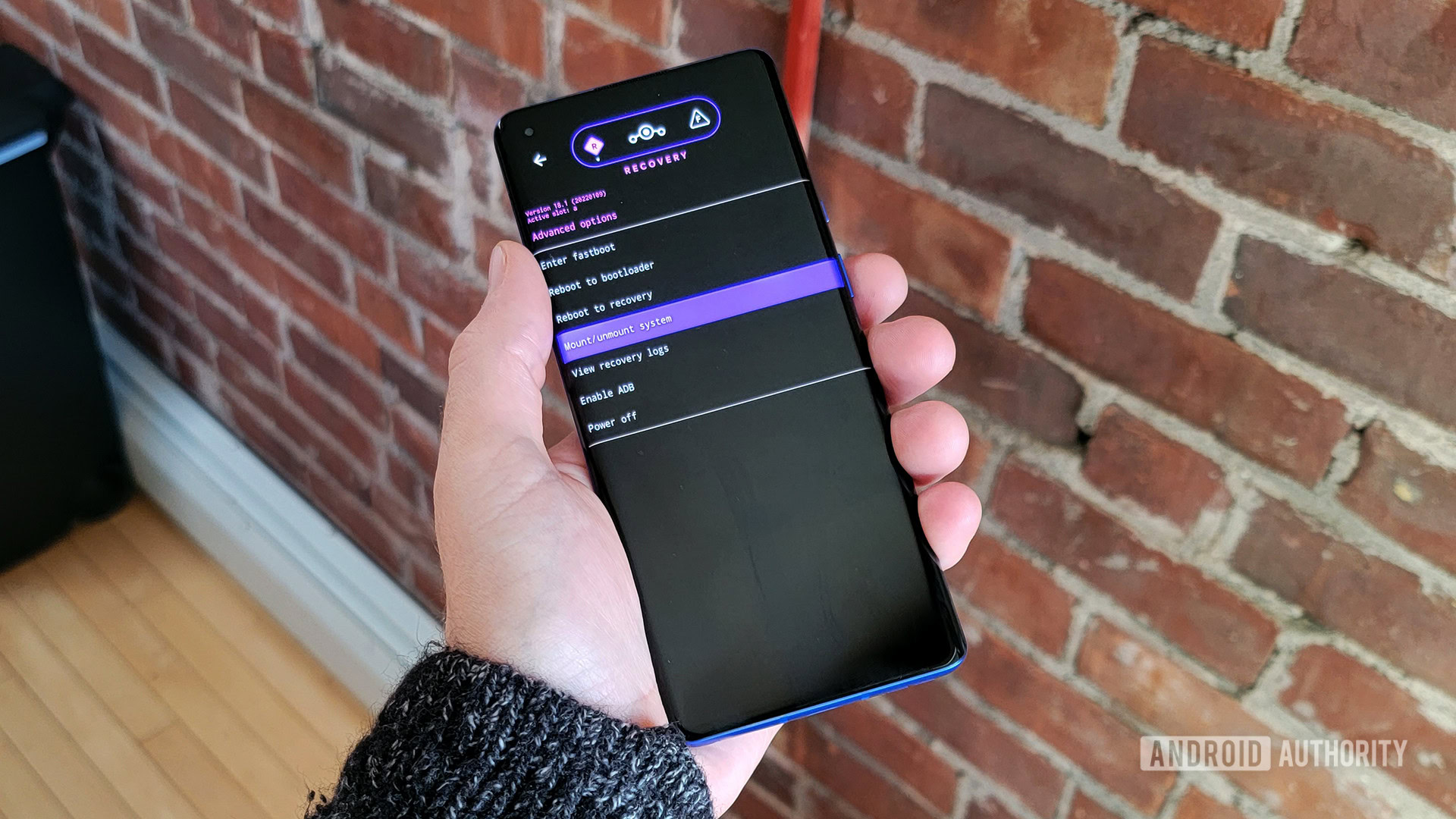
C. Scott Brown / Android Authority
Now that the bootloader is unlocked, it's time to actually flash something onto your device. This is a big step! You volition be flashing software onto your smartphone or tablet that volition drastically modify how your device functions.
You already downloaded the appropriate custom recovery from Lineage back in step two. Withal, if you oasis't done this already, head back to that footstep and get the recovery file thatexactly matches your device model.
As one concluding alarm: flashing the wrong custom recovery onto a device could crusade a brick. Be absolutely sure that the file you downloaded matches the model of your device. You've been warned.
Flashing your Lineage OS recovery
Once yous're all set, plug your telephone into your computer and fire up ADB via a control prompt and perform the following command:
adb devices
Just like before, the control above ensures your device is properly connected to your computer. After that, run this i:
adb reboot bootloader
Also as before, that command gets you lot into fastboot fashion. Side by side, run this command:
fastboot devices
That performs 1 final check before the flash that your device is continued and fastboot is gear up to go. Finally, you lot run this command:
fastboot flash recovery RECOVERY.img
Check out the screenshot below to see how this should all expect:
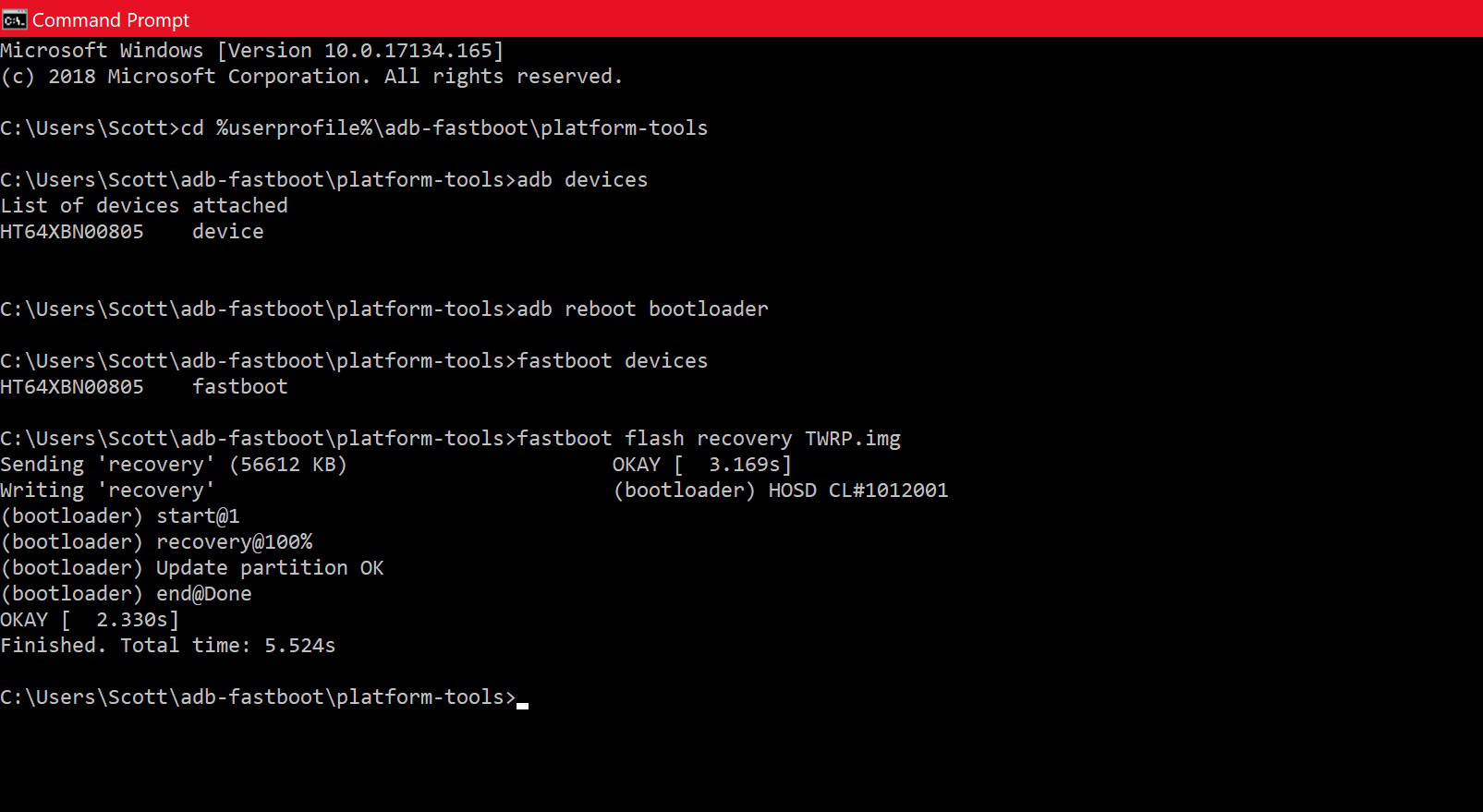
In one case you've flashed your new recovery, reboot your phone. The easiest way to exercise this is correct from the command prompt:
fastboot reboot
Your phone will reboot every bit normal. Once it's done, y'all'll have terminated your fastboot connectedness and be dorsum in ADB. You lot'll at present use ADB to boot into your new recovery with this command:
adb reboot recovery
Since you lot just flashed over your original recovery, your device will kick into Lineage recovery. You'll exist greeted outset by the screen below:
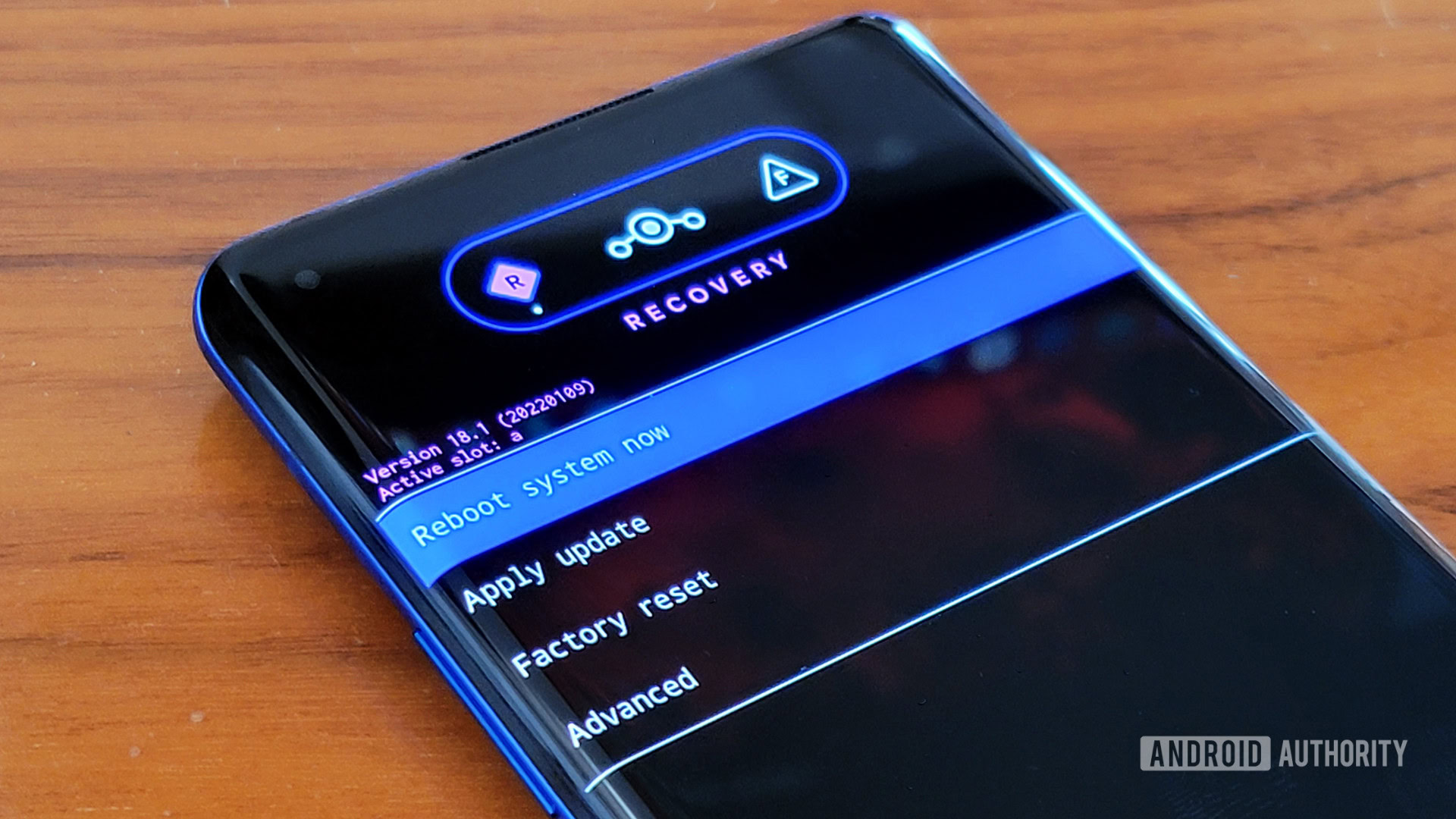
C. Scott Brown / Android Authority
In one case you've booted your device up into Lineage recovery, y'all are ready for the side by side stride: flashing Lineage OS!
Pro Tip: There are numerous YouTube videos and online tutorials on how to flash a custom recovery. In fact, at that place'southward probably a video specific to your device! Search Google for "flash Lineage recovery on [device name here] video" and see if you tin picket someone else go through this process commencement so you'll have a ameliorate idea of what to do.
Stride vi: Flash Lineage Os
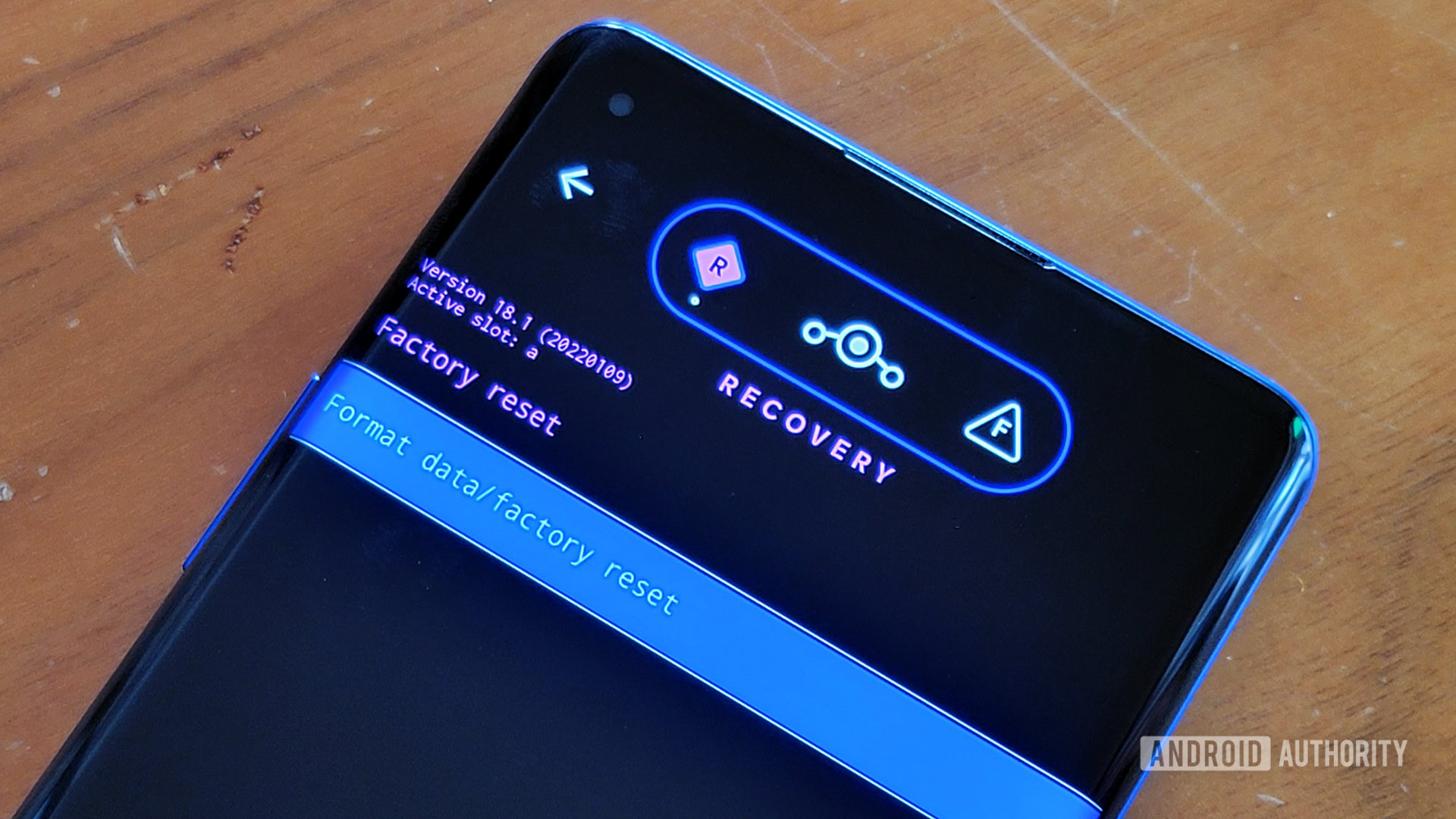
C. Scott Brownish / Android Authority
You downloaded the appropriate Lineage OS file to your computer way back in the second footstep. Retrieve that information technology needs to be in the ADB folder and renamed to LINEAGE.goose egg.
From the primary menu of Lineage recovery, tap Mill reset, and then tap Format information/factory reset. Lineage volition warn yous this is serious concern, only since you made a backup in the third step you have nothing to worry about (right?!). Follow the prompts and complete the format process.
After yous get a "Data wipe complete" message at the bottom of the screen, striking the dorsum button until yous're back at the recovery's chief menu. HitAdvanced and so hitEnable ADB. Now yous've mill reset Android and are ready to use ADB commands again.
One time that's washed, yous're ready to flash Lineage Os.
Moving files and flashing
With your device still in recovery style and connected to your calculator, fire upwards a command prompt or terminal window in the ADB folder and perform a device cheque. Once checked, from the main menu of the recovery, tap Apply update > Apply from ADB. At present, blazon in this command:
adb sideload LINEAGE.null
After you blazon that in and press Enter, ADB will begin flashing the Lineage OS file to your device. This could take some time, and sometimes there'south no progress bar to lookout how fast it'south going. Give it a while (at least five minutes) before touching anything. Somewhen, you'll come across a "Full xfer" notification. This means it worked!
Do note that sometimes you could see "adb: failed to read command: Success" or "adb: failed to read command: No error." Either way, this all the same means the sideloading worked.
Now that you've flashed Lineage OS, you're ready for the 2d-to-last step. Stay in recovery!
Pro Tip: If sideloading your Lineage OS file isn't working, make sure the file is in the same reckoner directory as ADB. If the Lineage Os packet is on your desktop and ADB is in its ain folder, ADB won't know where the file is when you type in its name. All the files you are pushing and flashing should be in the same binder every bit the ADB plan. Refer back to the 2nd pace if you're confused!
Stride 7: Flash necessary applications
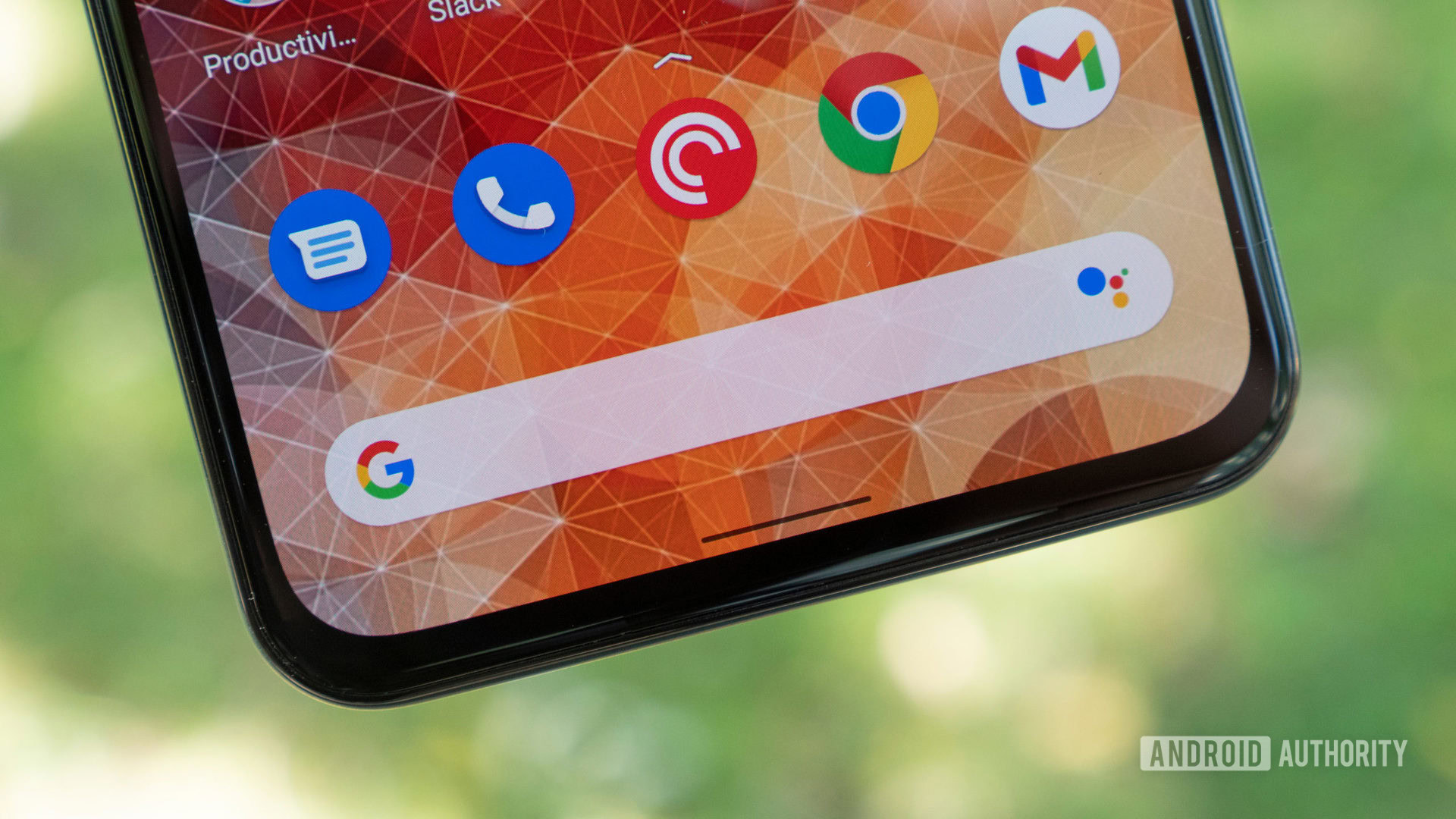
Jimmy Westenberg / Android Authority
You've come a long way so far! You are so close to being done. Yous have an unlocked bootloader, a custom recovery, and a fresh install of the latest version of Lineage OS.
The just thing you're missing is Google apps such as the Google Play Store, Google Play Services, Gmail, and Google Maps. Yous're going to wink the Nada file of Google apps yous downloaded in the 2nd step in the same mode every bit y'all flashed Lineage OS.
With your device booted into Lineage recovery, head to the main menu. Tap onAdvanced > Reboot to Recovery. Your phone will reboot, so give it a second. Once it's rebooted and dorsum to the main menu of your recovery, tapApply Update > Apply from ADB. As before, you lot're going to sideload the Google apps:
adb sideload GAPPS.zip
Usually, your Google apps package is smaller than your Lineage OS package, and then this sideload won't accept equally much time. Halfway through the sideload, the recovery will alert you that the Google Apps packet failed a verification test. This is normal and expected beliefs. Only tap on Yes to install the packet anyhow.
After you tapYeah, you tin can watch your apps installing. You have finished! Navigate dorsum to the main menu of recovery and tap Reboot.
Pro Tip: If you want to root your device, you can likewise wink a root file at this stage (before rebooting into the system). There are multiple root methods and files available for different devices, so I'm not going to become over them here. If you lot want root access, this would be the perfect opportunity to flash that file too.
Step 8: Reboot and personalize
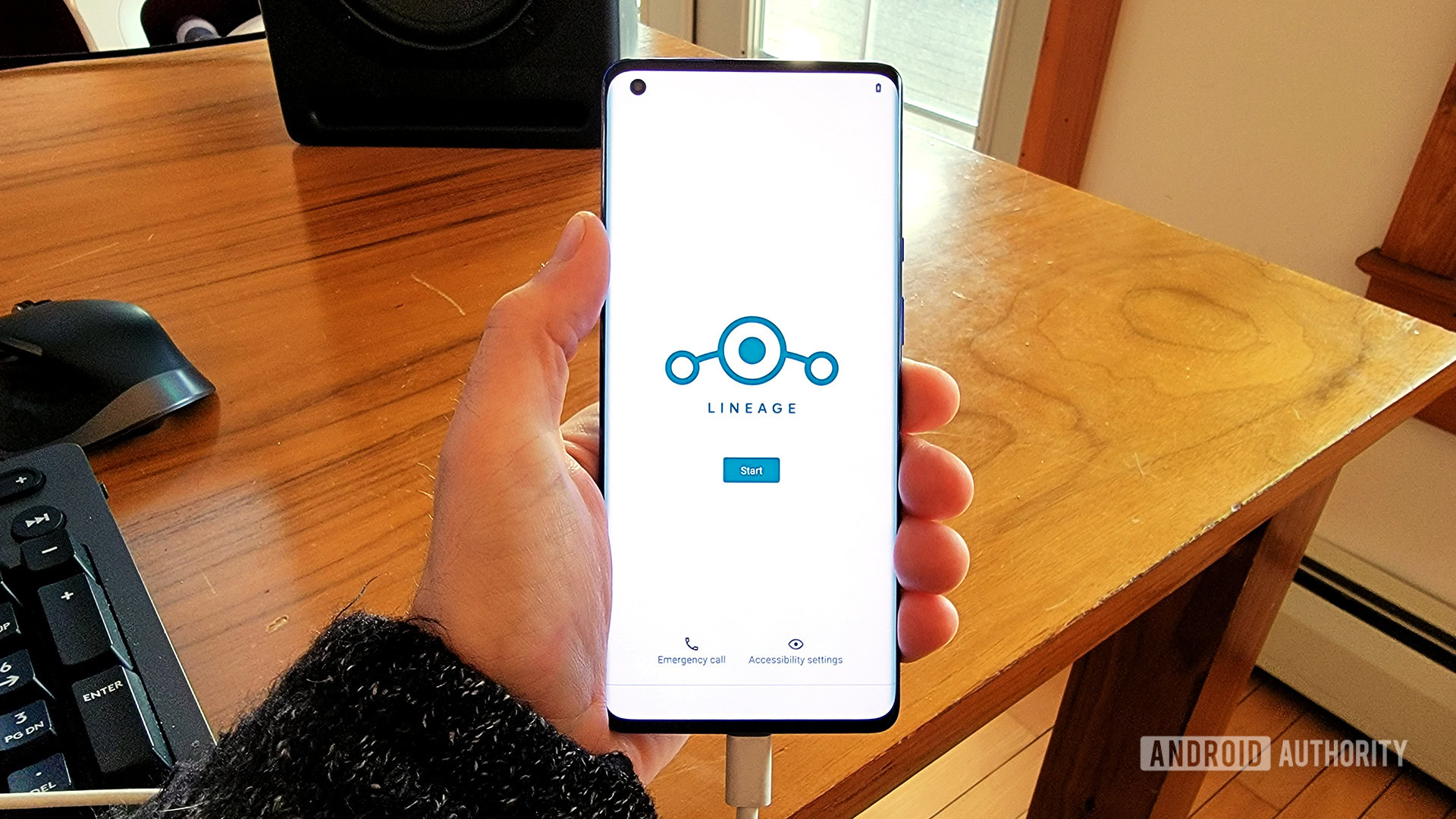
C. Scott Brown / Android Authority
Your first boot into Lineage OS will take a minute — give it time. You just installed a new operating system and don't want to blitz it!
If your get-go kicking takes longer than xv minutes, though, something is wrong. Do a hard reboot by belongings down the power button until the device restarts. Permit it try to boot once again. If it still doesn't kick, something didn't flash correctly, so head back to the sixth pace above and start again.
The first affair y'all'll notice upon a successful boot is a new boot animation, with the Lineage OS logo's 3 circles on a curved line.
Once the kick is complete, you'll be at the startup screen of Android, where y'all'll pick your language, add your Google Account, connect to Wi-Fi, and and so on. This is all very similar to what you previously performed when you beginning got your device, then there shouldn't be any surprises.
Once you get to the habitation screen, yous are officially done — you have Lineage Os on your device! At present head to YouTube to learn almost all the nifty features y'all can play with in this new version of Android.
Pro Tip: This is a great time to restore all the apps y'all backed up in the tertiary step. You can also manually re-download them all if you skipped that stride. Nosotros'll talk to y'all in a few hours.
Final thoughts
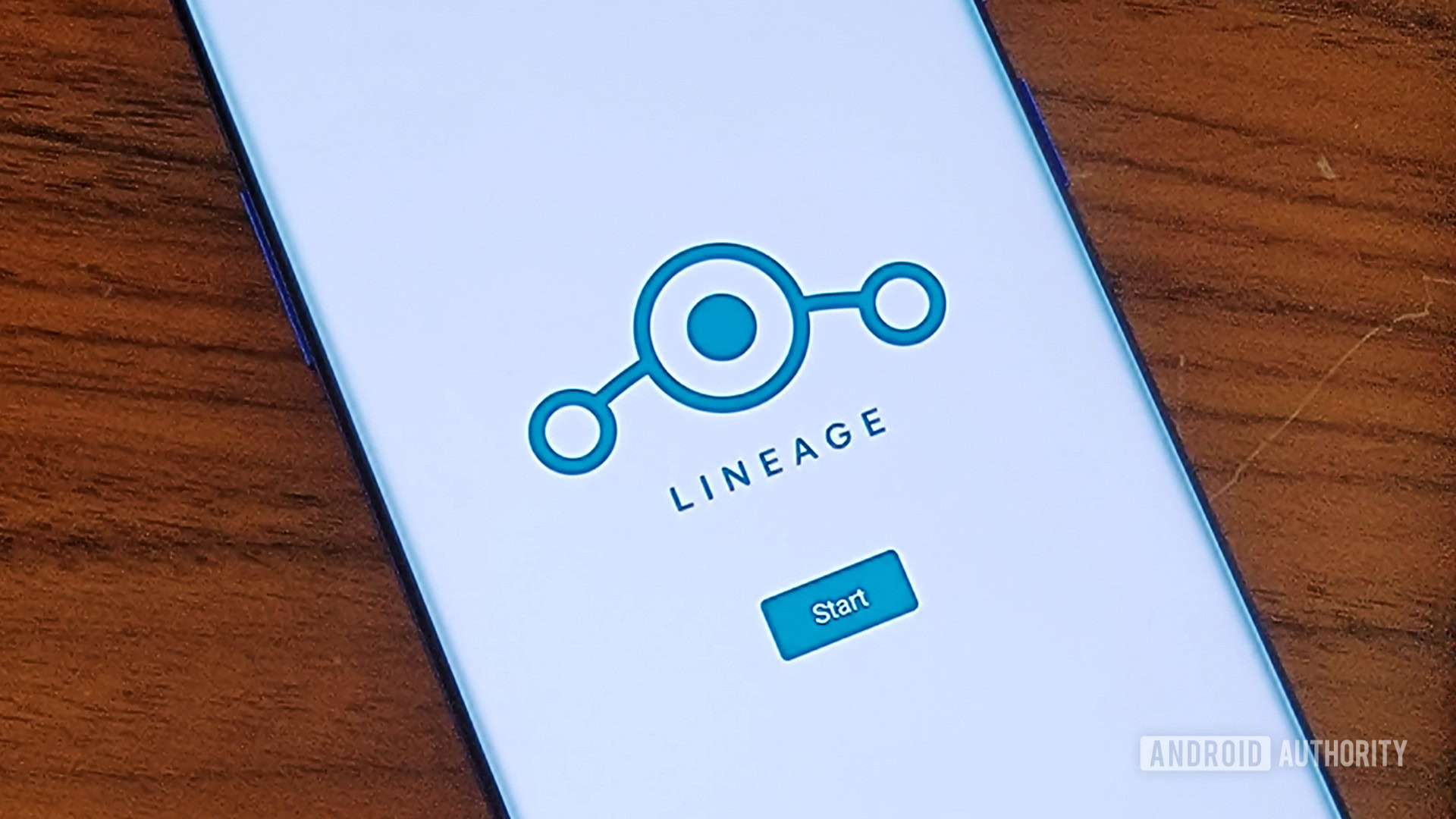
C. Scott Chocolate-brown / Android Authorization
Depending on your device, at that place are likely a lot of other custom ROMs out at that place too Lineage Os. Now that you know how to flash a ROM, y'all can get flash-happy and try out all sorts of new flavors. All you need to practise is find ROMs that match your device's model number and then repeat steps vi through viii. You don't demand to unlock the bootloader or install a custom recovery once more.
However, you'll need to backup your device again. Don't forget this vital footstep!
If y'all try out custom ROMs and decide yous don't similar them anymore, it is incredibly easy to switch back to the stock ROM your device originally had. There's a different set of instructions for flashing back to stock, but the essence is essentially the same. Exercise some Googling to figure out how to flash your particular device back to its manufactory defaults past searching for "flash [device name here] back to stock."
I hope this guide has been helpful to you! If you get stuck, ask some questions in the comments and someone will surely help you out!
hollomonlaing1951.blogspot.com
Source: https://www.androidauthority.com/lineageos-install-guide-893303/
Post a Comment for "Do I Need to Flash Gapps Again"